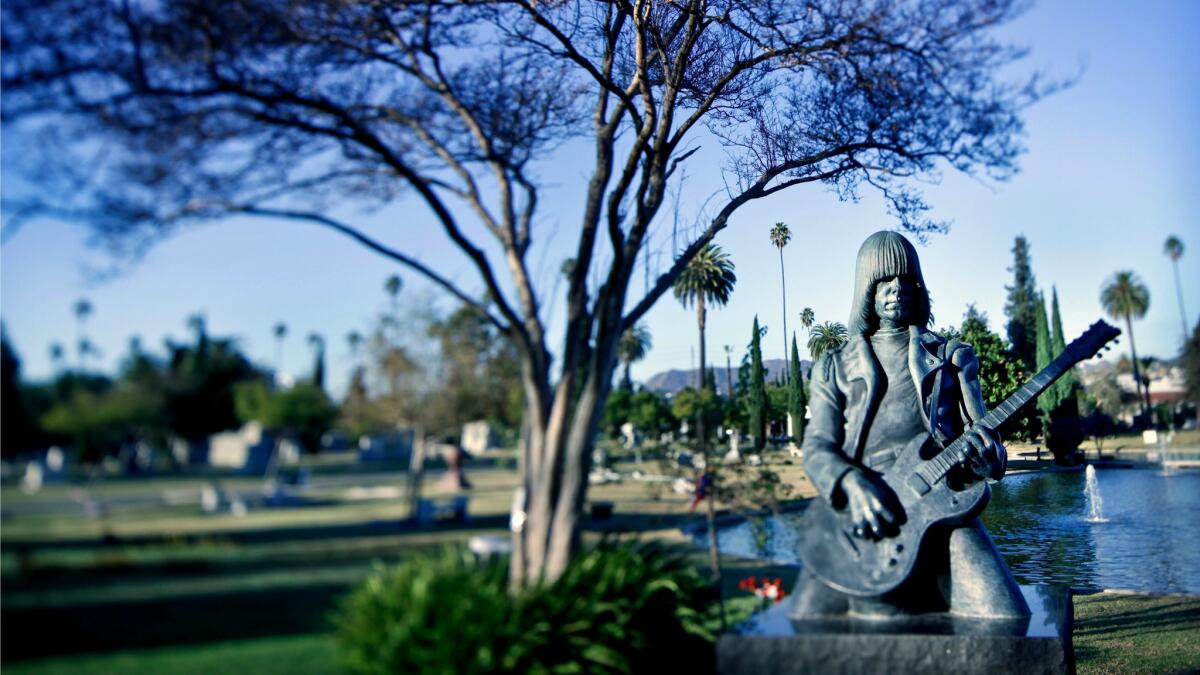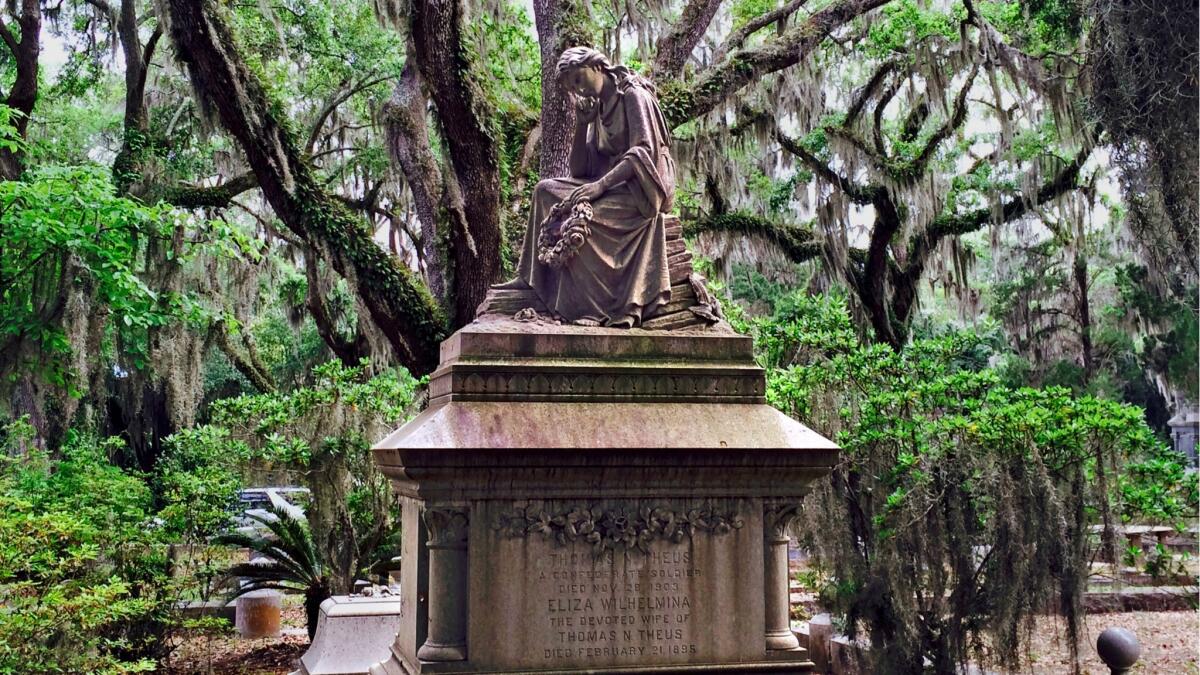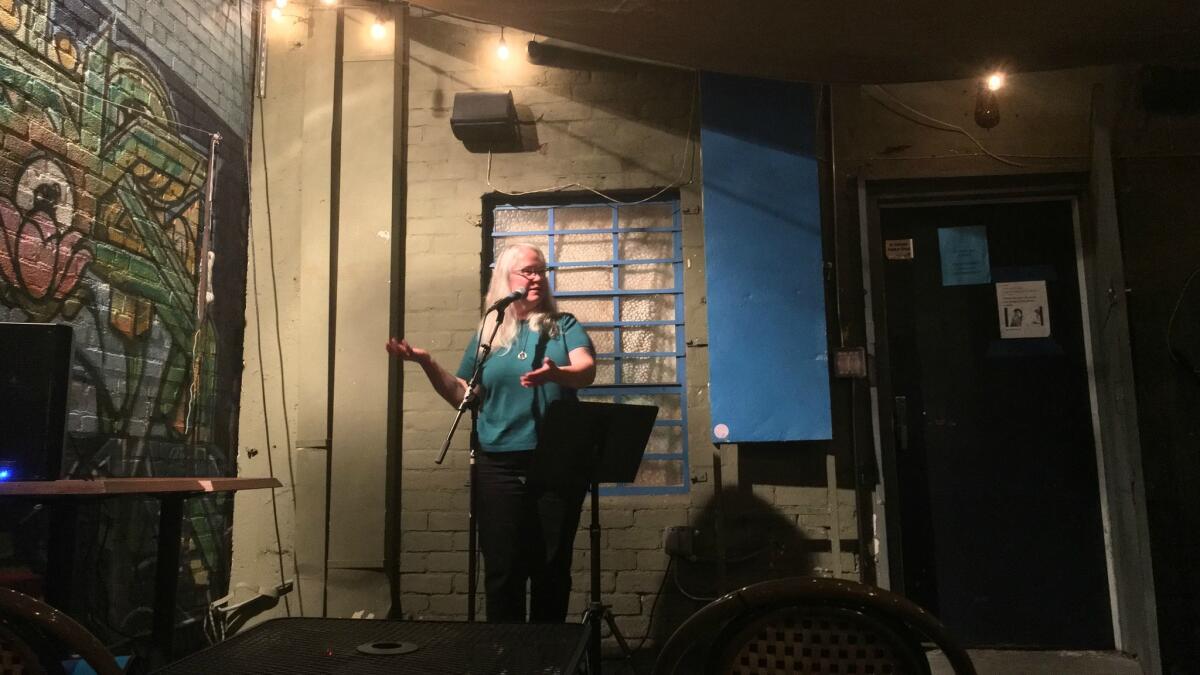Hurry to see a cemetery while you still can appreciate it, says author Loren Rhoads

- Share via
“I’ve never seen a ghost in a cemetery,” Loren Rhoads said at a reading for her unusual travel guide, “199 Cemeteries to See Before You Die.” But, she added, “I’d really like to.”
On the back patio of Stories Books and Café in Echo Park, strewn with fake spider webs for Halloween, about a dozen people gathered to have their books signed and meet the author Tuesday night. Rhoads read briefly from her informative, encyclopedic look at the world’s most remarkable cemeteries, many of which she has visited herself, before starting a more informal conversation.
Her icebreaker: “What’s your favorite cemetery?”
“Bonaventure, in Georgia” a woman replied without a second thought. Rhoads nodded her approval.

Despite speculation on Twitter that Rhoads chose 199 cemeteries for her book because when you visit the 200th cemetery you die, the number is not ominous. “I think you’re safe,” she said. “Either I’m immortal or the bar keeps being raised.” Scores of worthy cemeteries did not make the cut, including Stull in Kansas, which Rhoads noted is rumored to be the portal to hell. “I only have one from Russia,” she admitted, “which is a crime.”
Rhoads, who lives in the Bay Area, “started visiting cemeteries by accident.” After missing a flight to Spain in 1991, she ended up at Victoria Station in London and came across a book of cemeteries. “They were just luminous,” she said of the black and white photographs. Rhoads visited London’s Highgate Cemetery soon after and was immediately drawn to the beauty, lore and history contained there. Her curiosity grew into a passion. “Now I’m to a point where I find out where a cemetery is and build a trip around it,” she said.
Rhoads described the appeal of cemeteries as evincing “the persistence of memory.” Evidence of the 1918 flu epidemic, she explained, is recorded in graveyards and headstones. Cemeteries tell the history of segregation in America. They raise questions about wealth disparity — permanent monuments are a privilege not everyone can afford.
Rhoads believes that all lives are worth recording and hopes that her book inspires readers to reengage with cemeteries in a considerate way. In previous eras, “cemeteries were like parks,” she said, and in its heyday, Brooklyn’s Green-wood Cemetery was a destination not only to mourn, but to observe art and nature. “More people came to see it in a year than Niagara Falls.”
The fragility of cemeteries, and the people they inter, concerns her. “They’re dead. They’re really helpless. The least we can do is respect them.” Rhoads said she is monitoring the status of “a little pioneer cemetery” in Calistoga that was threatened by the recent fires in Napa Valley. “Ideally the stones would survive the fire,” she said, “but they’ll fragment.”

Much of the audience appeared to have more than a passing interest in cemetery tourism, including Megan Rosenbloom, a medical librarian and director of Death Salon, a group of academics and death professionals that explore mourning and mortality, and Karie Bible, who gives walking tours of Hollywood Forever Cemetery, which is included in Rhoads book.
Sarah Nix, who works in pharmaceuticals, described the event as “death positive,” the term for a movement that advocates for open conversations about death. “I know that there’s a limit to the things medicine can do,” she said. Nix’s coworker Linsey Fisher agreed. She supports “not avoiding the inevitable.” If people don’t have conversations about final wishes, like cremation, Nix said, well-meaning relatives might “gussy you up like a dead cupcake in a crystal coffin.”
Of course, being buried is what allows us to have the cemeteries that enthrall Rhoads with their thrill of discovery, artwork and stories. After the signing, Rhoads noted that unlike scattered ashes, cemeteries provide a place to “focus grief.” She speaks from experience: After a friend died during the AIDS epidemic and his ashes were scattered, “I didn’t have a grave where I could talk to him.”
Sign up for our Book Club newsletter
Get the latest news, events and more from the Los Angeles Times Book Club, and help us get L.A. reading and talking.
You may occasionally receive promotional content from the Los Angeles Times.








